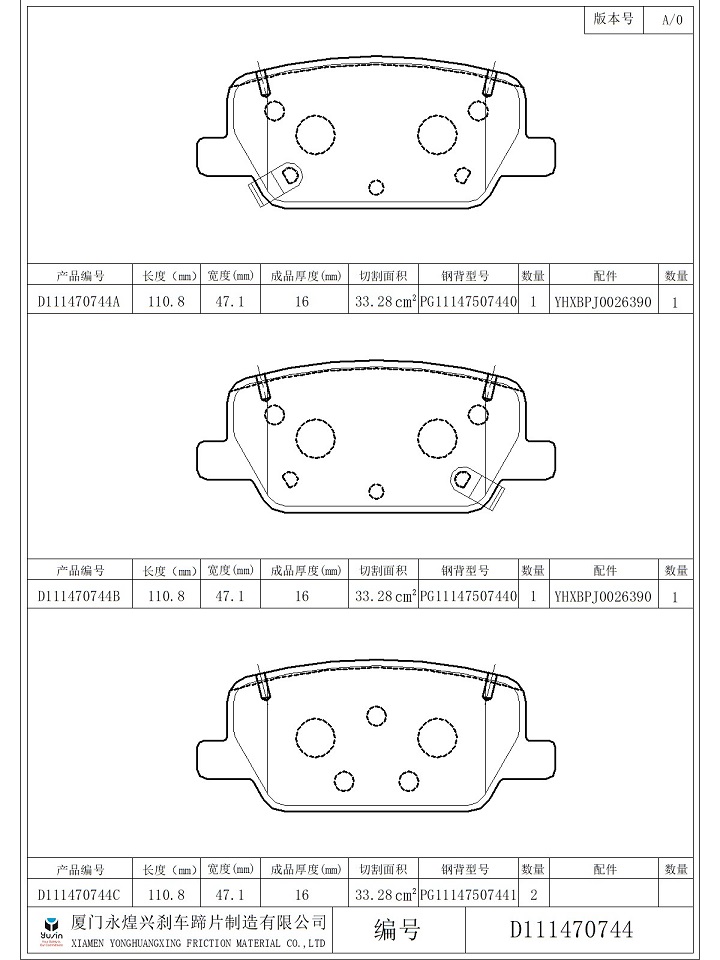The Difference Between Rear and Front Brake Pads: What You Need to Know
2024-06-26
When it comes to your vehicle's braking system, both rear and front brake pads play critical roles. However, these components are not identical and serve different functions based on their location and the specific demands placed on them. Understanding the differences between rear and front brake pads can help you better maintain your vehicle and ensure optimal braking performance. Let's explore how rear brake pads differ from front brake pads.
Differences in Design and Composition
1. Material Composition
Front brake pads are typically made from tougher materials such as semi-metallic or ceramic compounds. This is because the front brakes handle a majority of the stopping force (about 70-80%), requiring them to withstand higher temperatures and more intense friction.
Rear brake pads, on the other hand, can be made from slightly softer materials like organic or semi-metallic compounds. While they still need to be durable, the stress and heat they endure are less severe compared to the front pads.
2. Size and Thickness
Front brake pads are generally larger and thicker than rear brake pads. This size difference accommodates the greater braking force needed at the front wheels, where the vehicle's weight shifts during braking. Rear brake pads are smaller because they contribute less to the overall stopping power and are designed to provide balance and stability rather than the primary braking force.
Functional Differences
1. Distribution of Braking Force
The front brakes bear the brunt of the braking process. When you apply the brakes, the weight of the vehicle shifts forward, increasing the load on the front brakes. Consequently, front brake pads are designed to handle this increased pressure and heat.
Rear brake pads, while also crucial, are more focused on stabilizing the vehicle and preventing rear-end swaying or fishtailing. They provide additional braking force but are not the primary source of stopping power.
2. Wear and Tear
Due to the distribution of braking force, front brake pads typically wear out faster than rear brake pads. The intense friction and heat they endure lead to quicker degradation. Rear brake pads, while still subject to wear, generally have a longer lifespan because they are under less stress.
3. Role in Parking Brakes
In many vehicles, the rear brake pads are integrated with the parking brake system. This dual function requires rear brake pads to have certain design features that allow them to securely hold the vehicle in place when parked.
Maintenance and Replacement Considerations
Given the differences in function and wear patterns, maintaining and replacing rear and front brake pads require specific considerations:
1. Inspection Frequency
Front brake pads should be inspected more frequently due to their higher wear rate. Regular checks ensure that they are replaced before they become too worn, preventing potential damage to the rotors and maintaining effective braking performance.
Rear brake pads, while inspected during regular maintenance, may not need as frequent replacements as the front ones. However, they should not be neglected, as their failure can compromise overall braking balance and safety.
2. Replacement Strategy
When replacing brake pads, it's often recommended to replace them in pairs (both front or both rear) to maintain even braking performance. Using high-quality, vehicle-specific brake pads ensures durability and optimal function.
Conclusion
Rear and front brake pads are designed to meet the unique demands of their respective positions in the braking system. While front brake pads handle the majority of the stopping force and wear out more quickly, rear brake pads provide essential support for stability and parking. Understanding these differences helps you maintain your vehicle's braking system more effectively, ensuring safety and performance on the road. Regular inspections and timely replacements tailored to the specific needs of rear and front brake pads are key to a well-functioning braking system.



